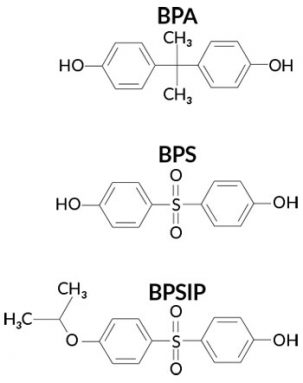Store-receipt chemicals taint blood and urine
Cashiers’ blood and urine possessed potentially risky levels of chemicals that mimic hormones

Many receipts are coated with chemicals that turn dark with heat. That means ink isn’t needed. But scientists have found that those color-change chemicals can get into people, where they may cause harm.
SondraP/istockphoto
By Beth Mole
Handling cash-register receipts may cost extra — at least in terms of health risks, a new study suggests.
Receipt paper might look like any other. But it’s often coated with chemicals that change color when the paper is exposed to heat. That chemical trick makes it possible to print receipts without using ink. One such color-change chemical often used in receipt paper is called bisphenol A (Bis-FEE-nul A). This BPA is used in many other products as well. Research has shown that this chemical can pass through the skin and enter the human body. When it does, it can mimic natural hormones that help control many body activities. BPA has been linked with cancer, obesity and cardiovascular diseases.
With growing concern about the safety of BPA, paper companies have been looking for substitutes. Two of these, already used in receipt paper, can enter the body as easily as BPA, a new study finds. This raises concern because both of the compounds may carry similar health risks, says Kristina Thayer. She works at the National Institute of Environmental Health Sciences. It’s in Research Triangle Park, N.C. As a toxicologist, she studies how poisons affect health. Her group’s new findings appeared August 25 in Environmental Health Perspectives.
To find out which color-change chemicals are in use, Thayer and her colleagues tested receipts handled by 77 cashiers. Each receipt primarily contained one of three chemicals. Some were coated with BPA. Others were coated with bisphenol S, or BPS. Still others were coated with a related chemical called BPSIP. (If that sounds like a mouthful, try saying its full name: 4-hydroxyphenyl 4-isoprooxyphenylsulfone.)

Researchers know little about BPSIP. And before now, they weren’t certain whether it even was used in receipt paper. Manufacturers don’t have to list all chemicals used in their products, especially ones that won’t be eaten.
Thayer’s team also sampled the blood and urine of cashiers. Many had one or more of the color-change chemicals in their bodily fluids. That was true both before and after they worked a shift during which they handled receipts. Blood levels of all three chemicals were within the range at which BPA causes health effects in animals, vom Saal notes.
Thirty-two of the cashiers handled receipts coated with BPS. After working a shift, the average concentration of BPS in the urine of those cashiers had doubled.
The researchers saw no similar spike of BPSIP in the urine of the 12 cashiers who handled receipts using this coating. But BPSIP was detected in blood more often than any of the other chemicals. It showed up in samples from all of the cashiers, no matter which receipts they had handled at work. The chemical was also in about a third of urine samples from 25 other volunteers who did not work as cashiers. This result suggests that BPSIP may be used in more products than just receipts, Thayer says.
In the 33 cashiers handling BPA-coated receipts, BPA levels did not change much after working. Thayer says this might be because people are exposed to BPA from so many other sources, including food containers.
Power Words
(for more about Power Words, click here)
bisphenol A (BPA) A building block of polycarbonate plastics and many commercially important resins. This chemical gained widespread public attention when research showed it could mimic the activity of estrogen, a female sex hormone.
bisphenol S (BPS) A chemical commonly used in epoxy resins. Its chemical structure is similar to that of bisphenol A (BPA), and like BPA, is can mimic the activity of estrogen, a female sex hormone.
cancer Any of more than 100 different diseases, each characterized by the rapid, uncontrolled growth of abnormal cells. The development and growth of cancers, also known as malignancies, can lead to tumors, pain and death.
cardiovascular An adjective that refers to things that affect or are part of the heart and the system of vessels and arteries that move blood through the heart and tissues of the body.
chemical A substance formed from two or more atoms that unite (become bonded together) in a fixed proportion and structure. For example, water is a chemical made of two hydrogen atoms bonded to one oxygen atom. Its chemical symbol is H2O.
concentration A measurement of how much of one substance has been dissolved into another.
development (in biology) The growth of an organism from conception through adulthood, often undergoing changes in chemistry, size and sometimes even shape. (in economics and social sciences)
endocrinology (in science) The study of the production of hormones or the body’s response to hormones. Scientists and medical doctors who work within thisspeciality are known as endocrinologists.
environment The sum of all of the things that exist around some organism or the process and the condition those things create for that organism or process. Environment may refer to the weather and ecosystem in which some animal lives, or, perhaps, the temperature, humidity and placement of components in some electronics system or product.
hormone (in zoology and medicine) A chemical produced in a gland and then carried in the bloodstream to another part of the body. Hormones control many important body activities, such as growth. Hormones act by triggering or regulating chemical reactions in the body. (in botany) A chemical that serves as a signaling compound that tells cells of a plant when and how to develop, or when to grow old and die.
obesity Extreme overweight. Obesity is associated with a wide range of health problems, including type 2 diabetes and high blood pressure.
toxic Poisonous or able to harm or kill cells, tissues or whole organisms. The measure of risk posed by such a poison is its toxicity.
toxicology The branch of science that probes poisons and how they disrupt the health of people and other organisms. Scientists who work in this field are called toxicologists.







